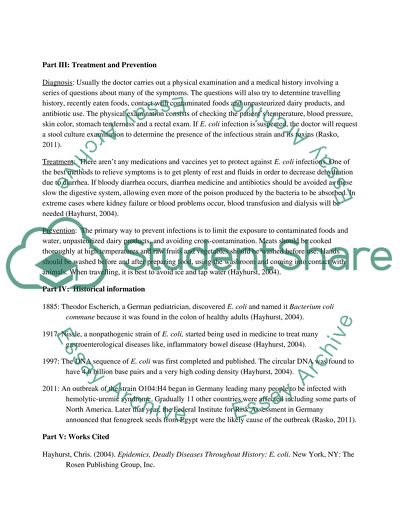Microbe Report on Escherichia coli Lab Example | Topics and Well Written Essays - 500 words. Retrieved from https://studentshare.org/biology/1605493-microbe-report-on-escherichia-coli
Microbe Report on Escherichia Coli Lab Example | Topics and Well Written Essays - 500 Words. https://studentshare.org/biology/1605493-microbe-report-on-escherichia-coli.


